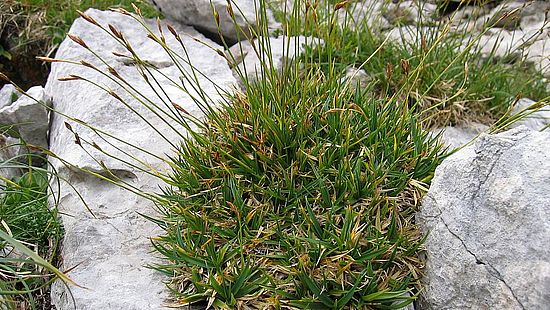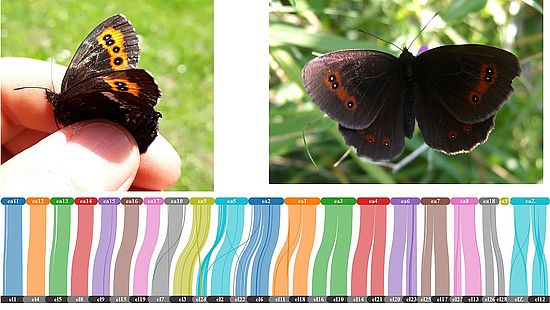Holocentric chromosomes and their impact on speciation
Biodiversity Genomics
A main focus of our group is to understand how large chromosomal rearrangements that lead to changes in chromosome numbers evolve and how they might impact speciation. For this we focus on species that have holocentric chromosomes, i.e. chromosomes that lack a centromere. Holocentricity has repeatedly evolved in animals and plants in some of the most diverse branches of the tree of life such as the sedge family Cyperaceae and the order Lepidoptera. Holocentric chromosomes are especially interesting because large chromosomal rearrangements may be more likely to be retained in the first place.
Our group combines comparative genomics with phylogenomic approaches to decipher the genomic architecture of chromosomal rearrangements and understand their evolutionary impacts both at a micro- and macroevolutionary scale. Our aim is also to understand the epigenomic architecture that underlies chromosomal rearrangements in holocentric species. For this we study both butterflies and sedges of the genus Carex.
Latest Publications
- Jospin A, Chittaro Y, Bolt D, Demergès D, Gurcel K, Hensle J, Sanchez A, Praz C*, Lucek K*. Genomic evidence for three distinct species in the Erebia manto complex in Central Europe (Lepidoptera, Nymphalidae). Conservation Genetics, in press.
- Willi Y*, Lucek K*, Bachmann O, Walden N*. Recent speciation associated with range expansion and a shift to self-fertilization in North American Arabidopsis. Nature Communications, 13, 7564.
- Armbruster G*, Lucek K*, Willi Y. Cryptic population structure at the northern range margin of the service tree Sorbus domestica. PeerJ, 10,e14397.
- Lohse K, Hayward A, Laetsch D, Vila R, Lucek K, Wellcome Sanger Institute Tree of Life programme, Wellcome Sanger Institute Scientific Operations: DNA Pipelines collective, Tree of Life Core Informatics collective, Darwin Tree of Life Consortium (2022). The genome sequence of the Arran brown, Erebia ligea (Linnaeus, 1758). Wellcome Open Research,7, 259.
- Augustijnen H, Patsiou T, Lucek K (2022). Secondary contact rather than coexistence – Erebia butterflies in the Alps. Evolution, 76, 2669-2686.
- Lohse O, Lohse K, Wellcome Sanger Institute Tree of Life programme, Wellcome Sanger Institute Scientific Operations: DNA Pipelines collective, Tree of Life Core Informatics collective, Augustijnen H, Lucek K, Darwin Tree of Life Consortium (2022). The genome sequence of the scotch argus butterfly, Erebia aethiops (Esper, 1777). Wellcome Open Research, 7, 217.
- Lucek K, Augustijnen H, Escudero M (2022). A holocentric twist to chromosomal speciation? Trends in Ecology and Evolution, 37, 655-662.
- Jaun A, Wymann H-P, Lucek K (2022). Lack of genetic structure suggests high connectivity of Parnassius phoebus between nearby valleys in the Alps. Alpine Entomology, 6, 1-6.
- Blattner L, Lucek K, Beck N, Berner D, von Fumetti S (2022). Intra‐Alpine Islands: Population genomic inference reveals high degree of isolation between freshwater spring habitats. Diversity and Distributions, 28, 291-305.
- Winiger N, Seibold S, Lucek K, Müller J, Segelbacher G (2022). Lost in dead wood? Environmental DNA sequencing from dead wood shows little signs of saproxylic beetles. Environmental DNA, 1-7.

Prof. Dr. Kay Luzek
University of Neuchâtel
Institute of Biology
2000 Neuchâtel
Phone: +41 32 718 3010
Research topics
- Speciation
- Biodiversity
- Conservation
- Holocentricity
Interdisciplinarity
- A macroevolutionary bridge between plant and insects
- Link between basic research and conservation


